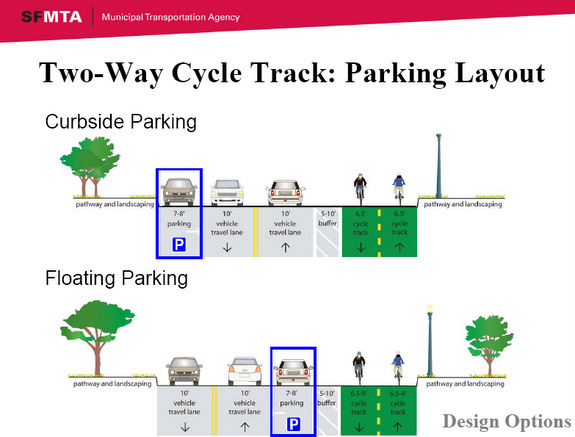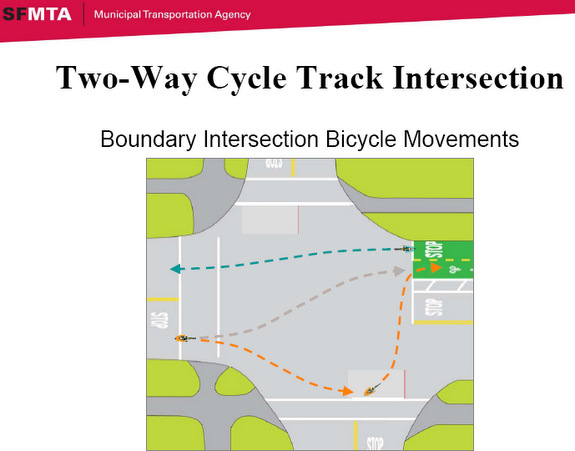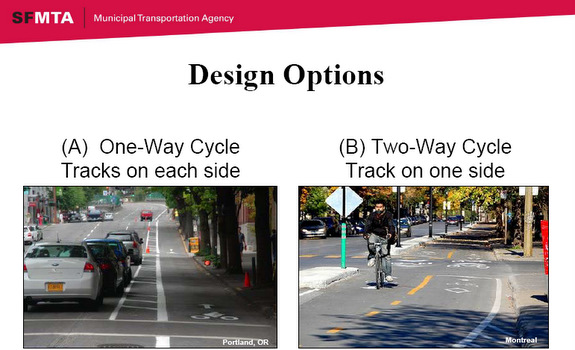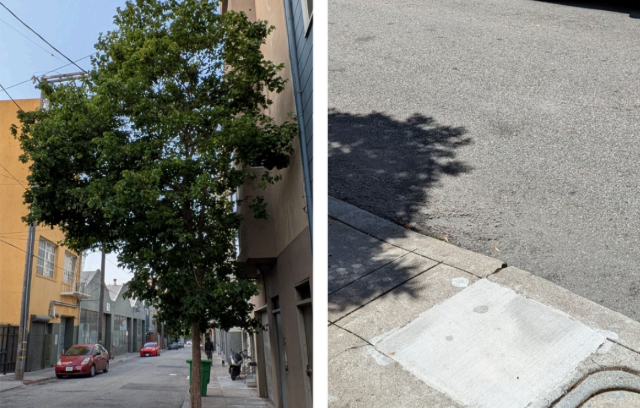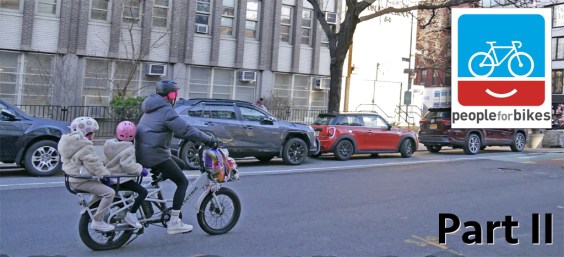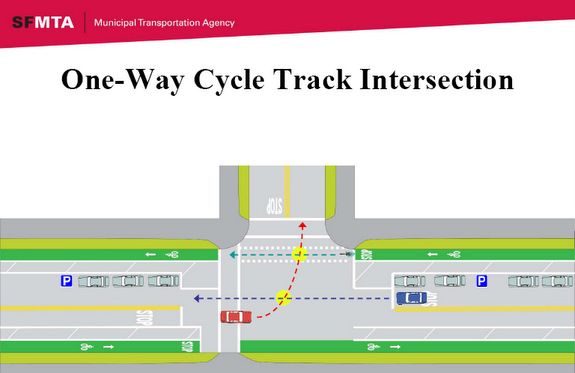
When traffic engineers from the San Francisco Municipal Transportation Agency (SFMTA) invited the public to weigh in on the design of Golden Gate Park's first separated bikeway on John F. Kennedy (JFK) Drive last night, the discussion wasn't dominated by complaints about losing car parking. Instead, the room was filled with citizens eager to see JFK Drive finally transformed into a road safe enough for their even children to cycle on, whether they felt the proposals would achieve that or not.
Attendees mulled over the multiple questions presented by SFMTA staff around how the physically-protected bikeway should best be designed: A two-way cycle-track, or two separate one-way bikeways on either side of the road? Should the bikeway be protected by parked cars, or does a striped buffer provide enough separation?
In his presentation [PDF], SFMTA Project Manager Antonio Piccagli explained that a two-way cycle track, which would require less buffer space than the alternative, would leave more room for a protective parking lane along the bikeway. However, he said, it also holds more potential for conflicts with drivers and could be difficult for riders to enter it at the intersections where it begins.
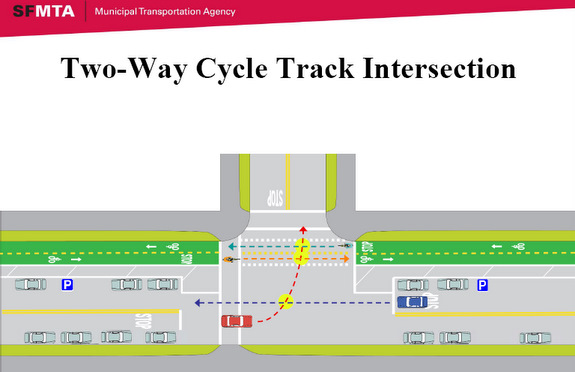
By a show of hands, community members favored separated one-way cycle tracks by a slim margin, but the written feedback still needs to be counted and many design details still have to be worked out.
For some long-time bike advocates, the project raises long-standing issues around the fundamental flaws in JFK Drive's design. San Francisco historian and SF Bicycle Coalition co-founder Joel Pomerantz argued that if JFK is to be substantially improved, the car traffic speeding through at peak commute hours can not go unaddressed.
"We should be leaping at opportunities, not apologizing for taking out a few parking spaces," said Pomerantz. "It would help more and cost less to make JFK not a through street. We shouldn't be considering such few options."
Another man, supporting Pomerantz's view, explained that Fell Street being "aimed right at Golden Gate Park" made the road a commuter route for drivers. "About twenty years ago during [the development of] the Golden Gate Park Master Plan, there were a number of motorists who said that they deliberately wanted to drive through Golden Gate Park on JFK because they enjoyed driving through a nice park area," he said.
"But the fact that they're doing so damages the park experience, and the Master Plan utterly failed to deal with that."
Others, excited about what would potentially be the city's first parking-protected cycle track, argued the project should be supported as the first of many more to come. SFMTA Transportation Planner Dustin White explained that by narrowing the roadway, the cycle track itself could have a traffic-calming effect and said further measures could only be included in a future project.
"We hear you," said White. "I'm just letting you know that the scope of this project is gonna look at a bikeway facility on JFK Drive, and that's it."
The SF Bicycle Coalition hasn't taken an official stance on any particular design option but strongly supports the project.
"There's great support for creating separated bikeways on JFK Drive," said Executive Director Leah Shahum, "because this stretch of Golden Gate Park is such an important part of the Bay-to-the-Beach bicycle route, which carries tens of thousands of people biking every day."
"This is one big step toward making the park more inviting and safe for people bicycling and walking, and we look forward to even more steps down the road."
The SFMTA plans to refine the design and present it at a meeting August 16. The project is expected to be on the ground in December, something the Mayor promised during a Bike to Work Day press conference.
